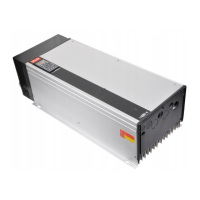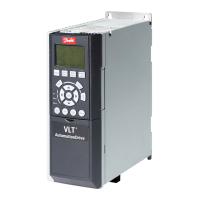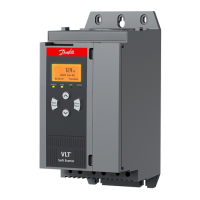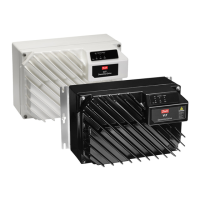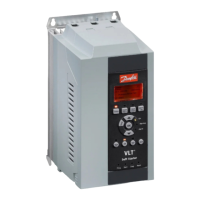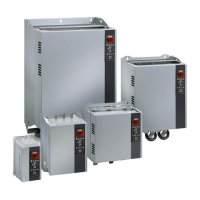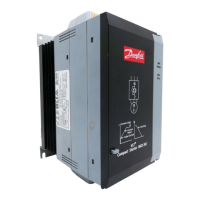PID Controller
The PID controller maintains the desired speed, pressure, temperature, etc. by adjusting the output frequency to match the varying load.
RCD
Residual Current Device.
Set-up
You can save parameter settings in four Set-ups. Change between the four parameter Set-ups and edit one Set-up, while another Set-up is active.
SFAVM
Switching pattern called
Stator Flux oriented Asynchronous V ector M odulation (par. 14-00
Switching Pattern
).
Slip Compensation
The frequency converter compensates for the motor slip by giving the frequency a supplement that follows the measured motor load keeping the motor
speed almost constant.
Smart Logic Control (SLC)
The SLC is a sequence of user defined actions executed when the associated user defined events are evaluated as true by the SLC.
Thermistor:
A temperature-dependent resistor placed where the temperature is to be monitored (frequency converter or motor).
Trip
A state entered in fault situations, e.g. if the frequency converter is subject to an over-temperature or when the frequency converter is protecting the
motor, process or mechanism. Restart is prevented until the cause of the fault has disappeared and the trip state is cancelled by activating reset or, in
some cases, by being programmed to reset automatically. Trip may not be used for personal safety.
Trip Locked
A state entered in fault situations when the frequency converter is protecting itself and requiring physical intervention, e.g. if the frequency converter is
subject to a short circuit on the output. A locked trip can only be cancelled by cutting off mains, removing the cause of the fault, and reconnecting the
frequency converter. Restart is prevented until the trip state is cancelled by activating reset or, in some cases, by being programmed to reset automatically.
Trip locked may not be used for personal safety.
VT Characteristics
Variable torque characteristics used for pumps and fans.
VVC
plus
If compared with standard voltage/frequency ratio control, Voltage Vector Control (VVC
plus
) improves the dynamics and the stability, both when the speed
reference is changed and in relation to the load torque.
60° AVM
Switching pattern called 60°
Asynchronous Vector Modulation (See par. 14-00
Switching Pattern
).
1.1.7 Power Factor
The power factor is the relation between I
1
and I
RMS
.
Power
factor
=
3 ×
U
×
I
1 ×
COS
ϕ
3 ×
U
×
I
RMS
The power factor for 3-phase control:
=
I
1
×
cos
ϕ1
I
RMS
=
I
1
I
RMS
since
cos
ϕ1=1
The power factor indicates to which extent the frequency converter im-
poses a load on the mains supply.
The lower the power factor, the higher the I
RMS
for the same kW per-
formance.
VLT
®
HVAC Drive Design Guide 1 How to Read this Design Guide
MG.11.B9.02 - VLT
®
is a registered Danfoss trademark
9
1

